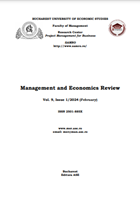The Non-Agricultural Labour Productivity Effects of Working Time: South Africa’s Case
The Non-Agricultural Labour Productivity Effects of Working Time: South Africa’s Case
Author(s): Chama Chipeta, Thomas Habanabakize, Mulatu Fekadu ZerihunSubject(s): National Economy, Business Economy / Management, Economic policy, Human Resources in Economy, Socio-Economic Research
Published by: EDITURA ASE
Keywords: employment; labour productivity; working hours; working schedules; labour market;
Summary/Abstract: The purpose of the current study is to assess the impact of working time on non-agricultural labour productivity in the South African economy. To achieve this objective, the study utilised the Autoregressive Distributed Lag Model (ARDL) and correlation analysis to analyse the effects of different working time arrangements on labour productivity. The results of the study indicated that weekly working hours have a significant influence on worker productivity. Working between 30 and 39 hours per week was found to greatly enhance productivity both in the short and long term. Additionally, working between 15 and 29 hours per week showed a slight positive effect on productivity. Conversely, working more than 39 hours per week (between 40 and 45 hours) only increased productivity in the short term, while working less than 29 hours and exceeding 45 hours per week had a negative impact on labour productivity. These findings suggest that an optimal working schedule to maximise labour productivity is between 30 and 40 hours per week, with overtime not exceeding 5 hours per week. Establishing a proper schedule of weekly working hours is crucial for maximising labour productivity and reducing work-related stress, which can impede productivity.
Journal: Management and Economics Review
- Issue Year: 9/2024
- Issue No: 1
- Page Range: 61-77
- Page Count: 17
- Language: English

